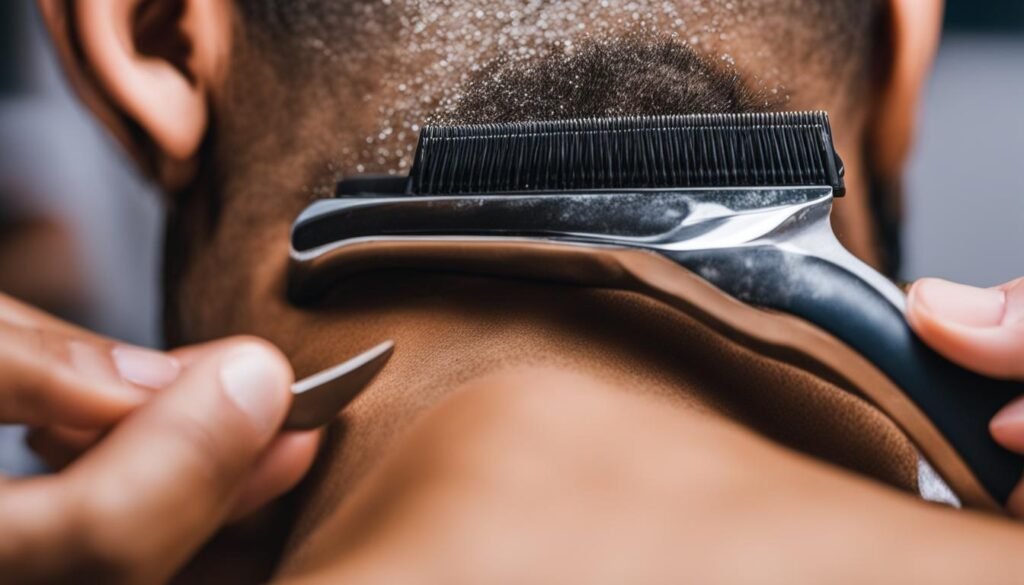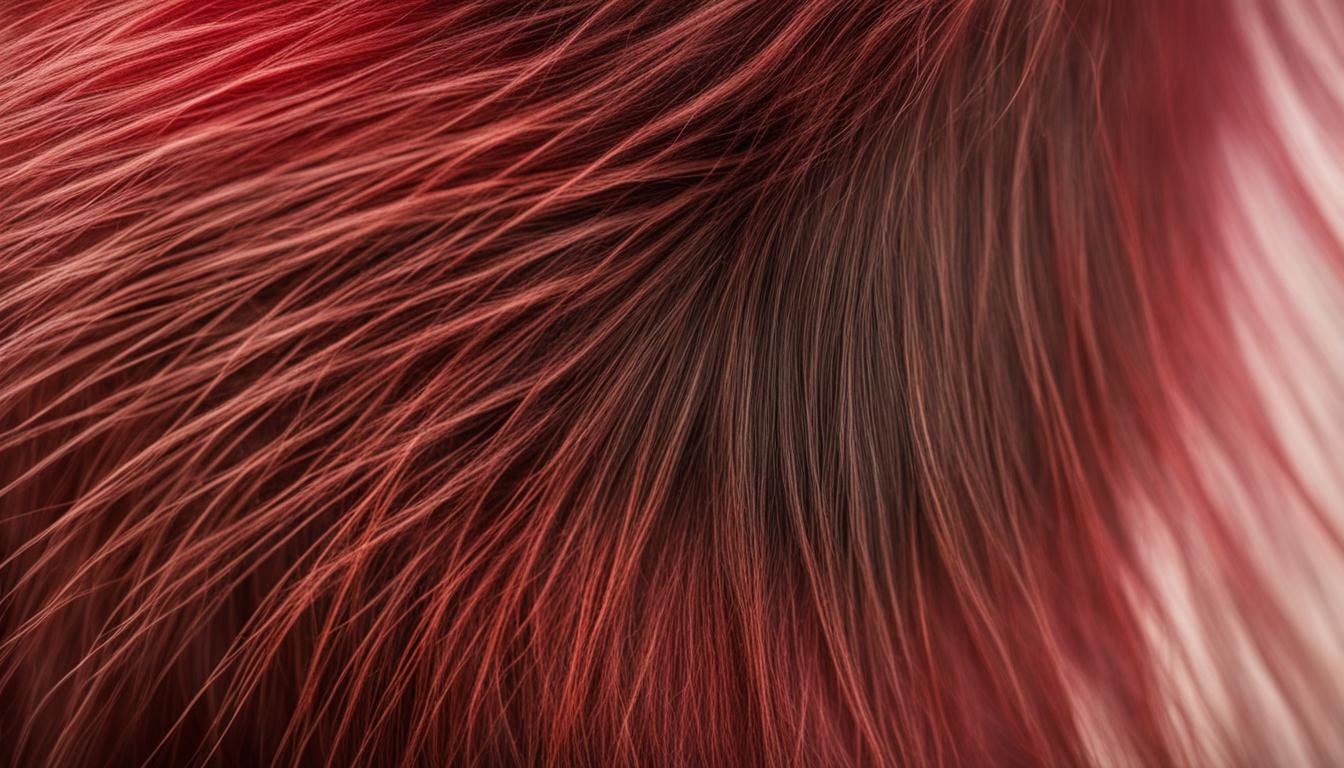Butt hair: it’s a topic that many people wonder about but hesitate to discuss openly. Don’t worry, you’re not alone in your curiosity. In fact, hair growth on the buttocks, including the area between the butt cheeks, is completely normal and serves a protective purpose for the skin.
There are various factors that can determine the type and amount of hair in this area. Genetics play a significant role, influencing the color, thickness, and density of the hair. Additionally, certain medications, hormone conditions, and hypertrichosis can also contribute to butt hair growth.
While there is no medical need to remove butt hair, some people choose to do so for personal preference or hygiene reasons. It’s important to note that hair removal methods carry certain risks, including razor bumps, rashes, and ingrown hairs. In this article, we will explore the causes of butt hair growth, discuss the pros and cons of hair removal, and provide tips for grooming and maintaining butt hair hygiene.
If you’ve ever wondered, “Why is there hair in my butt?” or want to learn more about managing butt hair, read on to discover the answers.
What Causes Hair to Grow in Your Butt Crack?
Genetics, medications, hormone conditions, and hypertrichosis can all contribute to hair growth in the butt crack area. Understanding the factors behind this growth can help shed light on why some individuals have more hair in this area than others.
Genetics:
Like other hair growth patterns on the body, the amount and thickness of hair in the butt crack can be influenced by genetics. Some individuals may simply have a genetic predisposition for more hair in this area, while others may have less hair due to their genetic makeup.
Medications:
Certain medications, such as corticosteroids and oral minoxidil, can stimulate hair growth in various parts of the body, including the buttocks and butt crack. These medications work by affecting the hair growth cycle and promoting thicker, denser hair.
Hormone Conditions:
Hormone conditions that impact the endocrine system, such as polycystic ovarian syndrome (PCOS) and hirsutism, can cause increased hair growth in areas like the butt crack. These conditions can lead to an imbalance of hormones, resulting in excessive hair growth.
Hypertrichosis:
Hypertrichosis is a rare condition characterized by excessive hair growth anywhere on the body, including the butt crack. It can be genetic or acquired, and while it may not pose a health risk, it can be a cosmetic concern for some individuals.
Understanding the various causes of butt crack hair growth can help individuals better understand their own bodies and make informed choices regarding hair removal or grooming. While there may be different factors at play, it’s important to remember that butt hair growth is a natural occurrence and does not necessarily require removal for medical reasons.
Should I Remove the Hair Between My Buttocks?
The decision to remove hair between the buttocks is a matter of personal preference. Some people prefer a smooth, hairless feel for aesthetic reasons or to feel more hygienic, especially if they sweat a lot in that area. However, it’s important to note that there is no medical or hygienic advantage to removing butt hair. The presence of hair in the buttock area is completely normal and serves as a protective barrier for the skin.
Despite personal preferences, it’s crucial to consider the potential risks and side effects associated with butt hair removal methods, such as shaving, waxing, or bleaching. These methods can lead to itching, irritation, razor bumps, and ingrown hairs. Removing hair between the buttocks requires extra care and attention due to the sensitive nature of the skin in that area.
“The decision to remove hair between the buttocks is a personal one. While some individuals prefer a hair-free feel for aesthetic or hygiene reasons, it’s important to weigh the risks and potential side effects.” – Dr. Emma Johnson, Dermatologist
Personal Preference and Hygiene:
For individuals who choose to remove hair between their buttocks, personal preference is the primary motivating factor. It provides a smooth and hairless sensation that some find aesthetically pleasing. Additionally, individuals who have excessive sweating in that area may prefer hair removal to maintain better personal hygiene.
The Risks of Butt Hair Removal:
While butt hair removal may seem like a straightforward process, it carries certain risks and side effects. Itching and irritation can occur as the hair begins to grow back, and using improper techniques or products can lead to razor bumps and ingrown hairs. These issues can cause discomfort and potential infection if not properly addressed.
It’s important to keep the following points in mind when considering butt hair removal:
- Shaving can cause itching, irritation, and razor bumps.
- Waxing the buttock area may result in skin burns if not done carefully.
- Bleaching the hair may lead to skin irritation or allergic reactions.
Keep in mind that every individual’s skin and hair type is unique, and what works for one person may not work for another. It’s crucial to prioritize your own comfort and safety when deciding how to manage butt hair.
How to Get Rid of Hair Between Buttocks
Removing hair between the buttocks requires extra care and sensitivity. There are several methods you can choose from, depending on your preference and desired level of permanence.
Shaving
Shaving is a common and convenient method for removing hair between the buttocks. To shave this area, use a clean razor and a handheld mirror to ensure you have a clear view. Take your time and be cautious to avoid any accidental cuts. It’s important to note that shaving only provides temporary results, as the hair will grow back relatively quickly.
Laser Hair Removal
If you’re looking for a more permanent hair removal solution, laser hair removal may be a suitable option. This professional treatment involves using a concentrated beam of light to destroy hair follicles, preventing future hair growth. Laser hair removal typically requires multiple sessions for optimal results and should be performed by a trained professional.
Waxing
Waxing is another popular method for removing hair between the buttocks. It can be done by a professional at a salon or at home using wax strips or hot wax. However, caution is needed as the skin in the butt crack can be sensitive and prone to burning. Waxing provides longer-lasting results compared to shaving, as the hair is removed from the root. Keep in mind that waxing can be uncomfortable and may cause temporary redness or irritation.
Electrolysis
Electrolysis is a permanent hair removal method that involves using an electric current to destroy individual hair follicles. This treatment is typically performed by a licensed electrologist and requires multiple sessions to achieve desired results. Electrolysis can be an effective option for removing hair between the buttocks, but it can be time-consuming and may cause temporary discomfort during the procedure.
It’s important to choose a hair removal method that suits your preferences and needs. Each method has its own advantages and considerations, so take the time to research and consult with professionals if necessary. Remember to follow proper hygiene practices and be mindful of any risks or side effects associated with hair removal in the buttocks area.

Risks and Side Effects of Removing Hair Between Your Buttocks
Removing hair between the buttocks is not without its risks and side effects. It’s important to be aware of these factors before deciding on hair removal methods. One common side effect is itching, which can occur as the hair starts to grow back. This can be uncomfortable, but it usually subsides within a few days.
Irritation is another side effect that may be experienced after removing butt hair. The skin in this area can be sensitive and prone to redness or inflammation. Using a gentle shaving cream or gel can help minimize the risk of irritation. Additionally, burning sensations can occur, especially if the skin is not properly moisturized after hair removal.
Razor burn is a particular concern when using shaving as a hair removal method. This can happen if the razor is dull or if too much pressure is applied. The best way to prevent razor burn is to use a sharp, clean razor and to shave in the direction of hair growth. It’s also important to keep the skin well-hydrated after shaving.
Ingrown hairs are another potential issue when removing hair between the buttocks. The skin in this area can be folded or pressed together, increasing the likelihood of ingrown hairs. To minimize the risk, exfoliating the skin gently and regularly can help prevent hair from getting trapped beneath the surface. It’s also important to avoid picking or squeezing any ingrown hairs, as this can lead to infection.
Infections can occur if cuts or nicks happen during the hair removal process. Additionally, bacteria can gather in the butt crack, leading to an increased risk of infection. To reduce this risk, it’s important to keep the area clean and dry after hair removal. Using antibacterial creams or ointments on any cuts or nicks can also help prevent infection.
